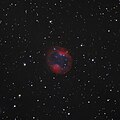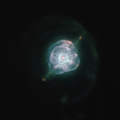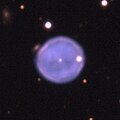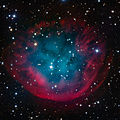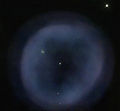Planetary nebulae are a type of emission nebula created from the ejected gas of dying red giant stars. [1]
The following is an incomplete list of known planetary nebulae.
- 1 2 3 4 5 6 7 Table entries are sourced from the individual articles, where available, for each nebula. Please see the linked article on the nebula for references.
- ↑ Many distances are estimates (denoted by the approx. suffix), as true distances are difficult to infer for planetary nebulae. Please see main article, Planetary nebulae, for more details on distance estimates.



















